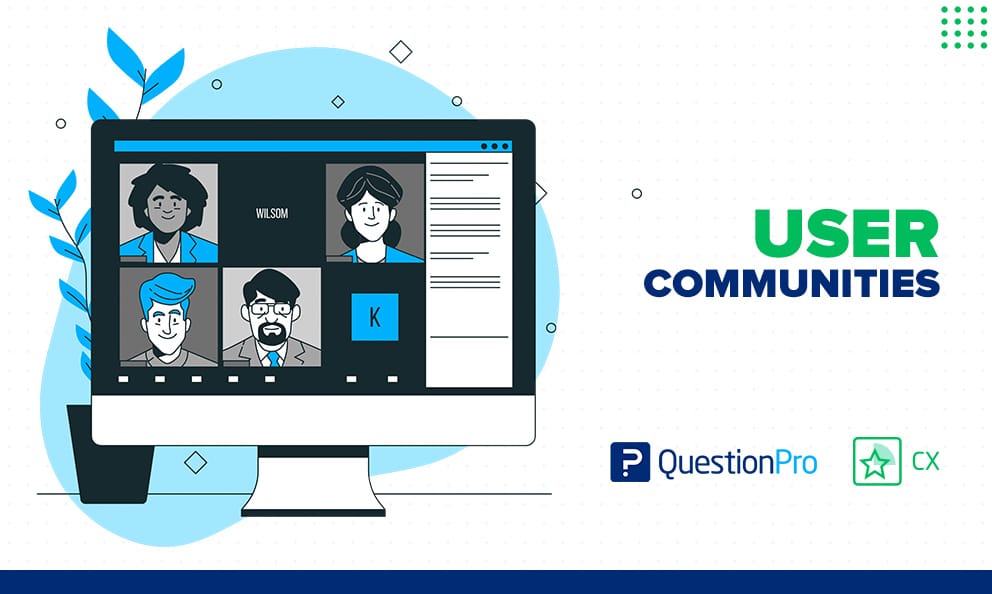
The idea of a community is that you are part of something larger than yourself, and that your participation in the community will enrich your life. You feel like there’s a purpose or value to what you’re doing, and because others are doing it too they can help you along the way.
Think of user communities as a tool for understanding what consumers want and how they use your product. It can also be used to build deeper relationships with them. By encouraging interactions between customers, you can get valuable insights into their needs and desires, which will lead to better products in the future and a better experience in their customer journey.
In this article I’ll go over what is user communities, why are they important, and ideas on how you can start implementing it in your business to boost the relationship with your customers.
What are User Communities?
User Communities are a digital space designed for a group of people to share their interests, opinions and establish new interpersonal relationships.
Enabling users to interact with each other on your product is the first step towards building a user community.
At the end of the day, user communities live on online platforms that empower users to interact with each other. Most often for personal matters, but can also be used to help your company engage with the customer community, and those consumers engage with you and others using your product in a meaningful way.
Learn more: What is an Online Community Portal?
User communities create an opportunity for users to give feedback about your product and even help you improve it. They also provide a valuable channel for active user engagement, which is crucial for building a strong brand. In other words, user communities can be your best product marketers, designers, and strategists—all at once!
This sense of shared experience is what makes communities so powerful—they enable you to build genuine relationships with customers that are based on delight, not transactions. When this happens, trust builds rapidly between you and them because their expectations for service have been exceeded by how well you’ve treated them as individuals rather than just another sale.
Why User Communities are important?
Implementing user communities can be a key differentiator when engaging with your customers. User communities create an opportunity for users to give feedback about your product and even help you improve it.
One of the most effective ways to build a strong relationship with your customers, both new and old, that doesn’t require much from them.
Instead, is giving your customer a voice – and that can feel powerful, and intimate to the right customers. The best part? It’s not difficult or expensive either—in fact, you may already have some of the platforms you need to get started on nurturing one.
Communities are typically more social in nature, and while you can have a dedicated customer support forum, you can also lean on social channels many of them already use in their personal lives like Linkedin, Instagram, Discord, Twitter, Facebook and so on. They key is being engaged!
How to implement user communities in your organization
User communities are a fantastic way to get feedback from your customers, which can be invaluable for any company. When you’re working on new products or updating current ones, it can be difficult to know what customers want without getting specific feedback from them.
You can ask customers directly in one-on-one interviews or surveys, but it may not always be easy for them to articulate their thoughts on the subject matter. When it comes to building better customer experience, it’s about gathering those insights in many different ways.
Getting people to engage in your community is just the first step. Now you need to build relationships with them based on delight, not transactions—so they’ll keep coming back for more (and tell their friends).
Learn more: 5 Ways to Engage your Community Members
The best way we’ve found is by creating opportunities for them to help us grow as much as we’re helping them learn about our products or services. It’s an ongoing cycle—we want customers who feel like insiders and experts because we treat them as such; this means sharing insights into how our products work so they can get the most out of them; and then those same customers share their own ideas with us so that together we can make the next version even better than before.
As a customer, they have a vested interest in seeing the product succeed. Customers who participate in communities are more likely to give you feedback about pain points, share experiences with others, and help spread the word about your product. This can make a huge difference in how successful your product becomes, propelling brand loyalty.
The key is ensuring your community remains active and engaged to breed a sense of belonging. Maybe their participation in the community will enrich their life or at the very least, the experience they have with your product.
It’s by fostering these relationships within your community space, that your customers begin to feel like part of the team—and this will increase their motivation when using said product or service more than ever before!
Delight customers with an open ear. When this happens, trust builds rapidly between you and them because their expectations for service have been exceeded by how well you’ve treated and listened to them as individuals rather than just another sale.
And at the end of the day, you’re now getting the right kind of feedback from the right kind of people, at the right time in order to provide better experiences.
Learn more: Why should businesses invest in customer experience (CX)
Trust, delight and purpose: An Example
There are three main areas where communities can help you build a deeper relationship with your customers: trust, delight, and purpose.
Communities enable you to build genuine relationships with customers that are based on delight, not transactions. As I’ve already mentioned above, these kinds of relationships can be very powerful because they’re based on the customer’s experience and shared experiences (rather than just being about the product or service).
For example, if you sell books to new parents about child development, you may see in your online community new parents sharing stories about their children’s first steps or other milestones—these types of interactions build trust between people because they demonstrate some degree of commonality among them. It also shows you that your book is working!
As long as the focus remains on sharing insights around a topic that matters deeply to both parties involved (in this case babies walking), then this kind of interaction will tend toward creating positive emotions in both parties involved—which means that deep relationships will form naturally over time as a result. Maybe, you can help celebrate that new parent’s win by further delighting them with a random gift, or a social shoutout.
The opportunities to be caring for your consumers are endless, and in 2022 there is no reason to not be thoughtful.
Conclusion
Enabling a user community is a great way to foster deeper relationships with your customers and create opportunities for them to share their stories and experiences about your product. This can result in more referrals, higher lifetime value, greater levels of engagement, and ROI. It’s a win-win!
At QuestionPro, we have many tools and resources within our QuestionPro CX product to enable you to collect, analyze and understand what your customers are saying. If you’d like to learn more about how we can help you dig deeper and move towards a less transactional relationship with your customers to improve CX reach out to me today!
QuestionPro offers some of the most advanced customer experience tools available. Gain valuable insights into your customers’ thoughts and experiences using QuestionPro CX software today.








